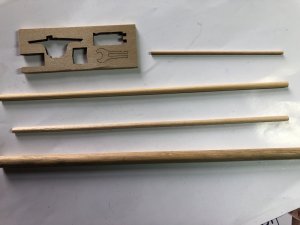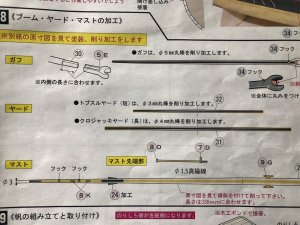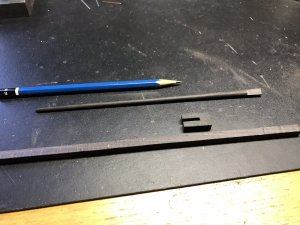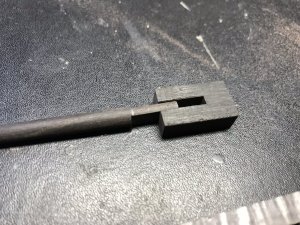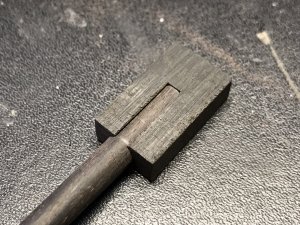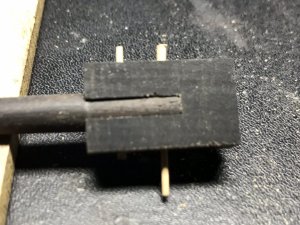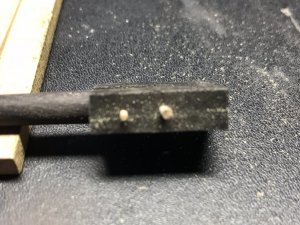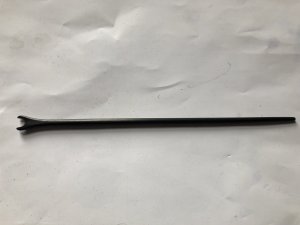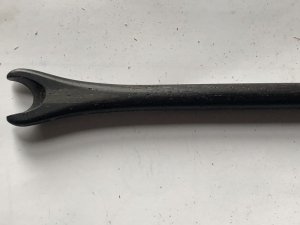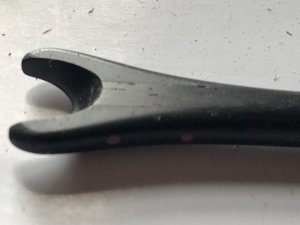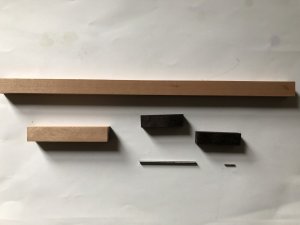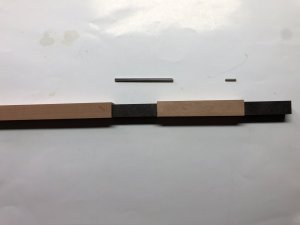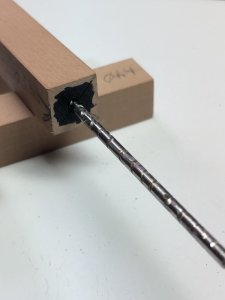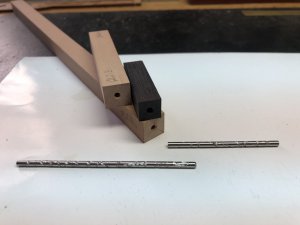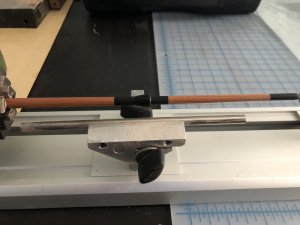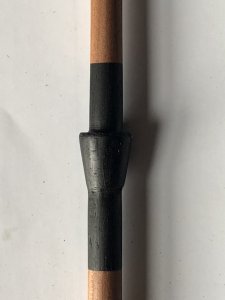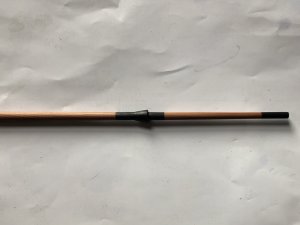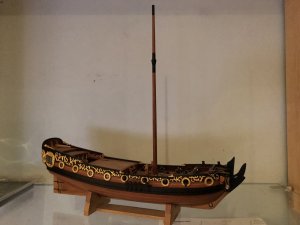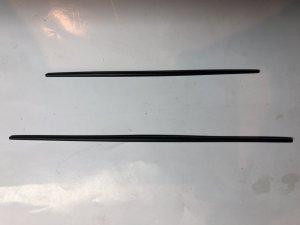Oh no, Don! You will not get rid of Jim that easy...LOL, and thank you for the compliments. I am hoping to be active at least the same. However, I will have less time dedicated to my own builds.Jim, WHAT DOES THIS MEAN, I HOPE YOU ARE NOT LEAVING THE FORUM
-

Win a Free Custom Engraved Brass Coin!!!
As a way to introduce our brass coins to the community, we will raffle off a free coin during the month of August. Follow link ABOVE for instructions for entering.
-

PRE-ORDER SHIPS IN SCALE TODAY!
The beloved Ships in Scale Magazine is back and charting a new course for 2026!
Discover new skills, new techniques, and new inspirations in every issue.
NOTE THAT OUR FIRST ISSUE WILL BE JAN/FEB 2026
You are using an out of date browser. It may not display this or other websites correctly.
You should upgrade or use an alternative browser.
You should upgrade or use an alternative browser.
Charles Royal Yacht, 1674, Scale 1:64, by Woody Joe (Japan)
We relocated last year in May to be close to our grandkids and it was really a brilliant move as we see them sometimes twice a week now. What a treat it is to interact with them. I hope you really enjoy them Jim.
Bill
Bill
Thanks, Bill! I absolutely agree they are full of joy to watch. We are living 30 minutes away from them, still seeing them on the weekends (at least for now)
How many Grandchildren do you have Jim, I have 5 all Grandsons, 3 live down in New Orleans, and 2 live next door to my place on the same property like 2 minutes away but there ages 11 and 9 so school time, and they go to a school one hour away from where we live, but do see them on the weekends, I hope to be going down to New orleans for my 81st birthday at the end of April, enjoy them Jim time flys by. Don
Really appreciated kind of words, Don. For now, I have only 2 grandchildren from my older Son. But I have another son, they are not planning yet. Maybe in the near future...I hope. As you said: time seems to pass very quickly.
Well...yea...I have not made much of the progress to building log as well as assembling\building Charles Royal Yacht in the past month. But given me an opportunity to thank everyone for your comments and participation in this build log.
Let us return to mast, yards, and gaff - what we call the skeleton of the rigging as a whole. Woody Joe supply dowels various diameter and length in the light color timber. This should suffice most of the modelers if they wish to paint and build according to the instruction (see photo). The mast and yard where natural brown in color until the beginning of the 17th century, with the exception to this being Mediterranean and Spanish ships, with their black and red masts and yards.
However, as with many parts in this kit, I made a decision to substitute supplied dowels with my own timbers. Yards and gaff were made out of Gaboon Ebony and mast made from a combination of Pearwood and Black Hornbeam. Gaff consists of two parts: Gaff itself, and a fork called - boom jaws. In real life, boom jaws where made as two pieces (left and right). I simplified mine and cut out from a solid piece. A tight joint between the gaff and boom jaws where reinforced by introducing 1mm treenails.
Once the entire construction dried, using a jewelry saw I cut out according to pattern and shape the boom jaws using Dremel rotary tool.
Iron bands for boom jaws will be fitted and presented later in the build log along with parral and trucks.
to be continued...
Let us return to mast, yards, and gaff - what we call the skeleton of the rigging as a whole. Woody Joe supply dowels various diameter and length in the light color timber. This should suffice most of the modelers if they wish to paint and build according to the instruction (see photo). The mast and yard where natural brown in color until the beginning of the 17th century, with the exception to this being Mediterranean and Spanish ships, with their black and red masts and yards.
However, as with many parts in this kit, I made a decision to substitute supplied dowels with my own timbers. Yards and gaff were made out of Gaboon Ebony and mast made from a combination of Pearwood and Black Hornbeam. Gaff consists of two parts: Gaff itself, and a fork called - boom jaws. In real life, boom jaws where made as two pieces (left and right). I simplified mine and cut out from a solid piece. A tight joint between the gaff and boom jaws where reinforced by introducing 1mm treenails.
Once the entire construction dried, using a jewelry saw I cut out according to pattern and shape the boom jaws using Dremel rotary tool.
Iron bands for boom jaws will be fitted and presented later in the build log along with parral and trucks.
to be continued...
...and I am continuing with the mast.
as I mentioned earlier mast made out of pearwood and black hornbeam. To make a black top insert I use steel as the reinforcement.
First, I drilled all the pilot holes. Using the cutout wheel, I made notches on a steel road. This is for the glue to have a better surface with wood.
Once glue completely dried, I turn the mast on my Proxxon lathe.
Yards where turned on the lathe using Madagascar Ebony (most likely will never use this timber again). Very hard to turn on the lathe.
This is will be it for now. The bowsprit is next. Thank you all again.
as I mentioned earlier mast made out of pearwood and black hornbeam. To make a black top insert I use steel as the reinforcement.
First, I drilled all the pilot holes. Using the cutout wheel, I made notches on a steel road. This is for the glue to have a better surface with wood.
Once glue completely dried, I turn the mast on my Proxxon lathe.
Yards where turned on the lathe using Madagascar Ebony (most likely will never use this timber again). Very hard to turn on the lathe.
This is will be it for now. The bowsprit is next. Thank you all again.
Last edited:
Jim that mast looks fabulous.Brilliant work!Splicing masts for different wood colours is not seen that often.Madagascan Ebony is a little more splintery than African but it is substantially cheaper.Gaboon Ebony is a new one on me,you learn something new everyday,Do you source black Hornbeam direct from Russia?
Kind Regards
Nigel
Kind Regards
Nigel
Lovely work on the mast Jim and your methods are very interesting using different coloured woods. The Ebony is a difficult wood to work with but you made it look easy.
Bill
Bill
Thanks for the kind comments, Nigel. I use the splicing technique because cannot use paint properly. It is always a mess, and I ruined the entire work. Black hornbeam I source directly from Russia: Сергей Трубчанинов Sergey Trubchaninov (Bibigon) msservice@list.ru He doesn't have large varieties of timber but specialize on rose Pearwood and black hornbeam, He sells billets and can cut individual planks (custom sizes). He will send you price list unfortunately in Russian. If help needed to translate I will be more than happy to help.Do you source black Hornbeam direct from Russia?
Thanks, Bill. I am using Black hornbeam whenever it is possible as a substitution to black paint. It is a good uniform wood, not difficult to work with, unlike the Ebony.Lovely work on the mast Jim and your methods are very interesting using different coloured woods. The Ebony is a difficult wood to work with but you made it look easy.
Thanks for the kind comments, Nigel. I use the splicing technique because cannot use paint properly. It is always a mess, and I ruined the entire work. Black hornbeam I source directly from Russia: Сергей Трубчанинов Sergey Trubchaninov (Bibigon) msservice@list.ru He doesn't have large varieties of timber but specialize on rose Pearwood and black hornbeam, He sells billets and can cut individual planks (custom sizes). He will send you price list unfortunately in Russian. If help needed to translate I will be more than happy to help.
Thank you Jim,I will save for future reference.I haven't seen black hornbeam advertised anywhere outside of Russia.
Kind Regards
Nigel
Black hornbeam is regular hornbeam (natural color is perfect for desk planking IMHO), it just somehow chemically dyed and processed in vacuumed place. I guess Russians know the secret LOL. Dmitry and Mikhail Bezverhij are using it in their models as wales and hull planking.I haven't seen black hornbeam advertised anywhere outside of Russia.
Jim, Your work and detailed explanation are WONDERFULL, will follow this very carefully, as I DISLIKE RIGGING VERY MUCH MAINLEY BECAUSE I DO NOT KNOW WHAT I AM DOING SO I AVOID THIS ASPECT OF SHIP MODELING BUT TIME I LEARN. Don
I completely understand your frustration, Don @donfarr However, rigging adds to model completeness and charm if you wish. It is not something is hard to archive. A good kit should come with the rigging plan sheet. Following individual lines, you can trace each start and end points. One of my favorite books about rigging is Rigging Period Ship Models by Lennarth Petersson. Uwek made a really nice review of this book. Please check this link out, Don. You will not find a lot of text there, it is all nice pictures and diagrams, It makes this book one of a kind. It should greatly help you to understand rigging concepts. It is not expensive, under $ 30.00 USAI DISLIKE RIGGING VERY MUCH MAINLEY BECAUSE I DO NOT KNOW WHAT I AM DOING
Book review - Rigging Period Ship Models: A Step-by-Step Guide to the Intricacies of Square-Rig" by Lennart Petersson
Rigging Period Ship Models: A Step-by-Step Guide to the Intricacies of Square-Rig by Lennart Petersson my copy Hardcover: 128 pages Publisher: Chatham Publishing; First Edition edition (1 July 2003) Language: English ISBN-10: 1861760612 ISBN-13: 978-1861760616 Product Dimensions: 20.8 x 26.2...
shipsofscale.com
Marvelous work again Jim. One advise, keep it away from the little ones otherwise your reinforcement will be tested to the max. 
Jim, I have the book, it is a good one, I am going to do the rigging on my GUNBOAT PHILADELPHIA, as the plane are excellent, one of my big problems, is the size of the blocks used the kit supplied ones are to small, I have ordered larger sizes waiting for them to come in, so I will follow this with extreme interest. Don




